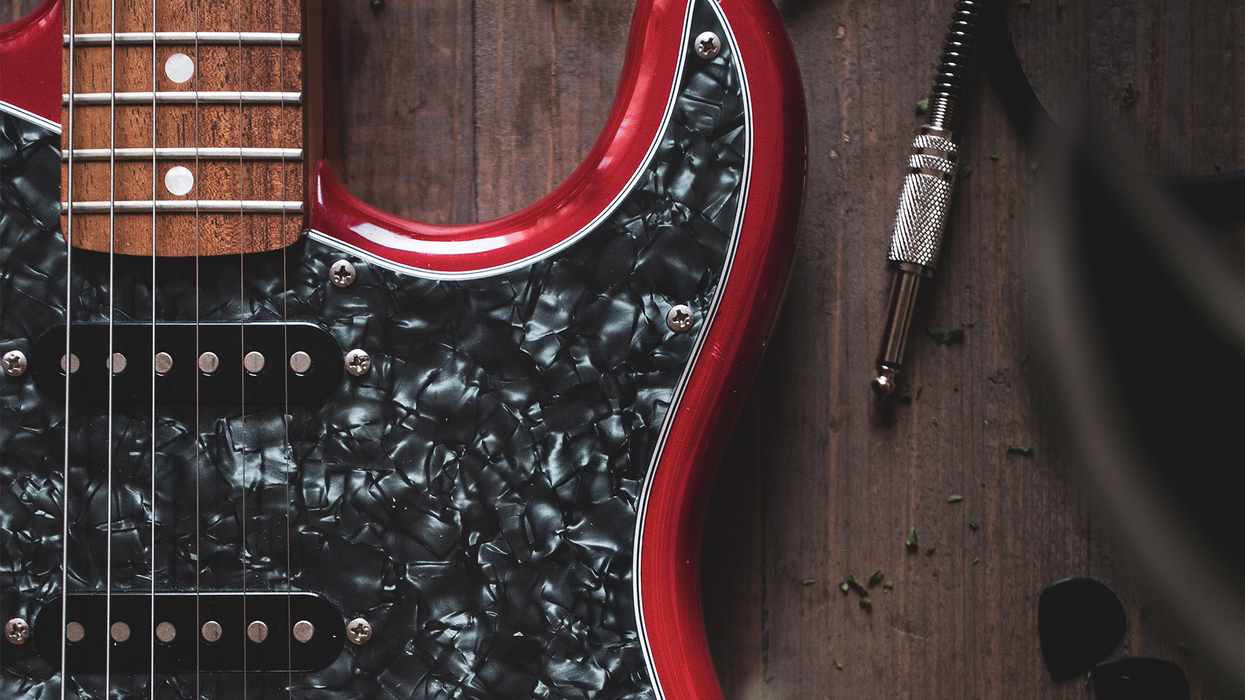Recorded live in concert, March 10, 1968 (first show) at the Winterland Ballroom in San Francisco, Cream’s version of Robert Johnson’s “Crossroads” still, 56 years later, stands as a high point of blues/rock soloing. While numerous magazine articles, book chapters, and album liner notes have been dedicated to this one solo of Eric Clapton’s–which is actually five different choruses/solos of 12-bar blues–the one aspect that could use even more attention is Clapton’s use of rhythm. Long story short, over the course of 60 measures, Clapton never once plays the same rhythm twice!
To make this lesson a bit more manageable I have focused on just the first 12-bar blues progression. I have also opted to:
1. Not do a note-for-note transcription (there are several book, magazine, and online transcriptions readily available) but rather present the nature of the solo, which is to say, embrace the spirit of “modular lick improvisation.”
2. Modify some of the pitch choices to keep the entire lesson rooted in the so-called “pentatonic box,” more formally known as A minor pentatonic.
3. Modify some of the phrasing, changing some of Clapton’s original moves that veer out of the pentatonic box.
4. Move a couple of the phrases down an octave.
5. Play all the licks twice, first over an A chord, then over a D chord, to demonstrate that these licks are modular and can be played over multiple chords, thus increasing their potential uses.
Clapton’s Rhythms
Ultimately, I’m of the belief that music speaks for itself. Nevertheless, occasionally it’s nice to overanalyze a timeless performance to understand what it is that makes it so. This is that time and place.
Ex. 1 is Clapton’s opening phrase–moved from A major pentatonic to A minor (see notes above). Right from the start, we have something rhythmically curious as Clapton is starting on beat 3 of the measure. Years later Clapton would complain about this, “God, I’m on the 2 and I should be on the 1.” Yet, this is one attribute that contributes to the solo’s charm. Note that this is the only two-measure phrase in the lesson.
Ex. 2 provides another opportunity to skip the downbeat as this lick starts on the “and” of 2. Also note that the rhythms in this phrase are strikingly different from Ex. 1. This rhythmic invention continues throughout.
Ex. 3 gives us our first grace note, a quick hammer-on from C to C#, a blues rock staple that Clapton will reiterate throughout the five solos–however, never the same way twice.
Ex. 4 is noteworthy as it is a simple ascension of the A minor pentatonic, with a quick two-note descending pull-off, though with three different rhythms in the space of one measure.
Ex. 5 is our first lick with a bend. Focus attention on the rhythmic phrasing, as this is a complex move, in particular the second bend, which is performed with staccato phrasing.
Ex. 6 starts with a rapid, hammer-on/pull-off combination, distinct from previous phrases.
Ex. 7 may be a bit tricky for some players as the opening bend is a half-step, played with the index finger (rather than the more common ring-finger bend). It is also worth pointing out that Clapton first performs this C to C# move with a bend, which is then followed by a hammer-on combination of the same two notes.
Ex. 8 is a phrase I have moved down an octave from the original. This lick provides us with our first slide. Note the simple elegance of the rhythms.
Ex. 9 is another down-the-octave move that works wonderfully in this position. It is also a one-measure phrase that has five discrete rhythms and a divine mixture of slurs.
Ex. 10 reconsiders Ex. 7’s phrasing of the C to C# move in reverse: hammer-on first, bend second.
Ex. 11 concludes the first 12-bar with more slurs and, once again, the C to C# phrase, but with altered rhythms.
Four More Solos to Go
It is humbling to realize that after all of those examples we still have 48 more measures to go! Now it’s your turn to break down the phrases. The second 12-bar is the arguably the easiest as it has the fewest notes, nonetheless the articulations will challenge many players. Solos three through five are the barnburners! My main two pieces of advice for those learning those solos:
1. Drop them down an octave. All the licks fall nicely in the pentatonic box at the fifth fret; performing them in the original position (the 17th fret) may be uncomfortable at first, if you’re not used to playing that high up the neck.
2. Play them slowly! The licks are all so rhythmically electrifying that speed is not the crucial factor here. Fast, slow, high, low, these are the least of your concerns, just get those rhythms right. Then start incorporating them into your own playing as soon as possible.

















